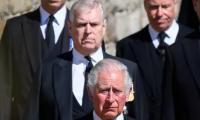also mobility choices. But this will happen if a) cities are allowed to densify; and b) the current policy of subsidising cars and taxing cycling and walking is discontinued.
Densification will begin with discontinuation of the current sprawl model where single family homes spread into the countryside, destroying agriculture and the environment. It means allowing for mixed use, commercial development of offices and shopping malls and flat/apartment-based living. It also means a liberal building code that does not disfavour high rise and commercial development. It also means a city development administration friendly to construction.
The current model favours the car as a mode of transport in our cities. The expense of the new metro-bus routes has been raised because of the need to provide space to cars. Otherwise it was easy to simply ban cars from Ferozepur Road in Lahore and use it only for buses. No big pillars or construction.
With densification, a lot of people can choose walking and bicycles as a mode of transport. But not if we keep the current car-favouring model in place. The city administration’s 50-year romance with the car has to give.
I have argued for long now that we need a complete paradigm shift in our approach to city management. Along with densification, we need a car policy. Such policy would be based on pricing the use of the car to discourage use especially in denser, more congested parts of the city. The following principles would be used in making this car policy.
• Congestion fee over the most dense mixed-use area where most of the traffic will be.
• The elimination of free or cheap parking in a big city like Lahore. Instead a graduated (distance from the centre) metered electronic parking system should be developed.
• The traffic flow should be studied for one-way systems to reduce congestion and also to find space for sidewalks and bicycle lanes.
• Sidewalks and bicycle lanes should be given priority everywhere to induce people to take these healthy alternatives. Motorists crossing over into those areas should be heavily penalised.
• With densification, zoning laws should allow more neighbourhood commerce for increased use of walking and bikes.
• Technology should be used for fee and fine collection and through cameras for enforcement. This could be a reasonable source of revenue for the city.
• Eliminate the requirement that every building be planned for more cars than people.
Somehow the ‘powers that be’ cannot leapfrog into the modern era and accept these new ideas. Instead they continue to tax the poor and our cities to favour cars. The sprawl from Kasur to Sialkot is wasteful in every way. The Lahore smog has robbed us of our lovely winter sun and jammed our airports and our streets. Jobs and output are lost as is agricultural land, while we build in the most energy intensive manner. Yet the old mindset remains fixated on maximising space for cars – leaving little room for people and community.
Changing the paradigm as suggested here will help start urban renewal. The construction industry will get a huge boost and we may even begin to see that symbol of development – the tower crane – in our cities. It will also lead to more inclusive growth as the poor will find space in our cities in flats/apartments. And they will be able to walk and use bicycles as cars are priced right.
More than likely, new services – such as delivery, carpooling, even taxis – will develop, providing much-needed employment to that worrisome youth bulge.
The chief minister of Punjab agreed with the vision but could not persuade his officials to implement it. Can the media?
The writer is former deputy chairman of the Planning Commission.
Email: nhaque_imf@yahoo.com
Twitter: @nadeemhaque
There is no information if rowdy Pakistanis involved in such incidents were actually dual nationals
This year alone, US Treasury would have to roll-over $10 to $14 trillion in maturing short-term debt
Tear gas no longer marks just protest sites; it paints entire cities as battlegrounds but then again, PTI did it first
Political structures and governance systems have been central to economic and social development
It is confirmed now 40 Pakistanis had died after boat of migrants had capsized in sea near Greece
Many people believe that in future, AI will play an even more significant role in their lives







